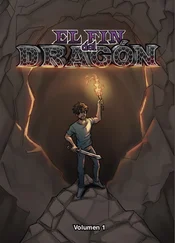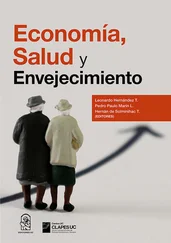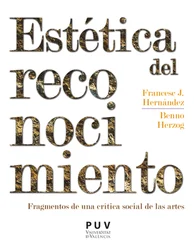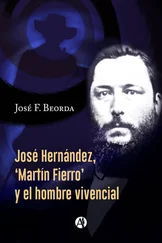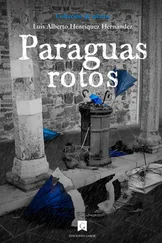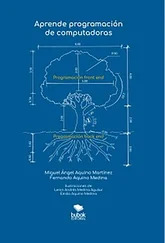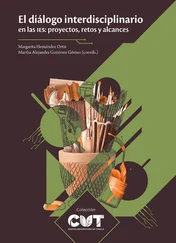According to the fake artist, it wasn’t a matter of Berta searching for a world in which it was possible to have an ibis at home, or inventing games to try to see the world differently. It was all about me, and how I was asking my daughter for the same thing I had been looking for at his studio: I wanted someone to narrate the world in a different way, in a way where we all fit in. According to him, there was nothing coincidental at all about the fact that the three of us (me, him, and Berta) had all arrived at the same point.
He was also searching for a world where the rules worked backwards. At least I think that’s what he meant. He began talking about Lilith, Adam’s first wife, and the world that she had constructed. He didn’t think it was true that she would have ended up surrounded by devils and seducing men while they slept. That was a story put together to disparage her, to negate any possibility of the existence of an alternative. If someone asked what had become of the first woman who had dared to defy God, the best option was to invent a terrible ending for her so no one else would try it. But he knew that Lilith’s ending was far from dark. He even went so far as to say that the Paradise designed by her and her children wasn’t enough, that she didn’t agree with all the rules they were trying to force on her to ensure her safety and that of her children. She renounced Paradise and God’s rule. And, in the opinion of the man who thought he was Vicente Rojo, such an exercise in valour could never have such a dreadful ending. Lilith’s children must be living out there somewhere, free of the rules and obligations of a tyrannical God, capable of building a world run by different rules, where everyone can find their place and they can live according to their own truths in a Paradise that is unconditional, free of artifice.
The fake artist discovered that he would have liked to have been Vicente Rojo one afternoon when he was working in an art supply store, and he overheard someone talking about a Mexican artist who had a fascinating body of work and no enemies. This last detail was what most caught his attention, so he tried to remember the name until it became a part of him. He told me he could recount the story of an everyday life, one where nothing happened for many years. There are many lives like that, of which there is little to say. But if I preferred, he could also tell me a horrible story, full of yearning and insatiable hunger, of violence, blood, pain, and punishment. He said that in the end, every story comes down to the same thing: human beings and their feelings. I could have chosen the story he would tell me, but I sat motionless, I knew his questions weren’t intended to draw me into the conversation, but were merely a preamble for him to finally tell me the story of the man who thought he was Vicente Rojo. I was ready for anything. I knew that when a discourse establishes the conditions of reality, it becomes an act of violence that imposes itself over all others.
He told me the story of a misunderstanding that, if you listened to it carefully, might seem funny. It was the story of a man who felt one day that he could no longer keep living the life he had led for many years, so he decided to leap into the void, leaving behind the fog in which he existed to do something important. He communicated this to those he was closest to. He told everyone that he was ready to take the plunge. Obviously, the decision surprised his wife, his children, and his relatives, along with the few friends he still had at this stage of his life. Without a doubt, it was the juiciest piece of gossip in his circle, and everyone wondered what this great leap forward would be. When would it happen? How would he protect himself? What would happen to his wife (his children already had their own lives, and had distanced themselves from their father), and where would he jump from?
The fact of the matter is, people were thinking and gossiping about his great leap more than he was. Before he could realise what was happening, the stage had been set for him. If it was going to be a great leap, it had to be from the steeple of the church, which was the highest point of the town where he lived. This is when the parish rector got involved, because he had to figure out the best time so that the normal functioning of the church wouldn’t be affected, while still allowing for the maximum number of parishioners to observe the repentant man’s leap. And so, that man who was so disgusted by his own life never even had the opportunity to explain what this great leap he had planned for himself was, because his whole community had already prepared for what they had understood as the only possible expression of his desire. Early one Sunday, the disgusted man found himself atop the steeple in his town’s church, asking himself if he should jump or not. Obviously, no one had thought about what might happen after he jumped, which is to say, during the fall.
If possible, the story about the disgusted man bewildered me even more. The painter who had gone by the name of Vicente Rojo asked me if I thought the man ought to have met the expectations of the others, or if, on the other hand, the only option left was to invent a new life, to believe it was possible to become someone else for whom the men and women in his circle would not prepare a spectacular leap into the void when he spoke of his desire to move forward, to move beyond the things he had known.
In any case, he decided to become Vicente Rojo because he had heard that he was a man with no enemies, and that everyone admired and respected his work. Later on, when he began to research him, he learnt many more details: Vicente Rojo was a painter who wanted to fill a void, a person searching for elemental forms and essential material, the truth we are made up of. Over a long period of time, he searched for all the books, articles, and catalogues he could find to get to know the artist’s body of work. One day, he learnt that Vicente Rojo would be visiting the city of his birth, Barcelona, in order to open a big show. He went to the show and did everything he could to meet the artist. By then, it had been quite some time since he abandoned his family and the circle of friends who had so carefully prepared for his leap into the void.
When he heard Vicente Rojo speak and saw his paintings on the Paseo de San Juan, he decided he could no longer move to Mexico — a goal that in his deepest desires, he never quite renounced — and that he should live as close as possible to that street. He would climb to the Paseo’s highest point, hoping to see on the horizon the same ship that Vicente Rojo had seen, from that very same place, when he was a boy. He became so obsessed with the artist’s paintings that he began to believe that the only place he wanted to live was inside the artist’s world. If by just looking at his paintings you could feel like you melted into its forms and became a part of the balance and peace of their composition, it was because the paintings’ creator had reached a higher state of knowledge, from which it was possible to remove suffering. His world was full of serenity and equilibrium. Through the geometric forms of his paintings, he had found a better order for things, and made reality better than what it actually was.
That afternoon he gave me his final gift: he spoke to me about the importance of looking at things differently in order to see truth. He said — although I think I also read it in an article about the Mexican artist — that he had undergone a long apprenticeship before he knew how to look at his own paintings and to understand what he was looking for. We mustn’t let ourselves be deceived by the number of stimuli our senses can perceive. This principle can be found in the work of the very first philosophers, who tried to build a discourse to explain human behaviour. The most important thing is to find one’s own truth: it’s a search that never ends, but takes shape as we undertake it. This is why he was drawn to the way Berta looked at his painting when he saw her for the first time at her school.
Читать дальше

